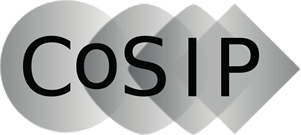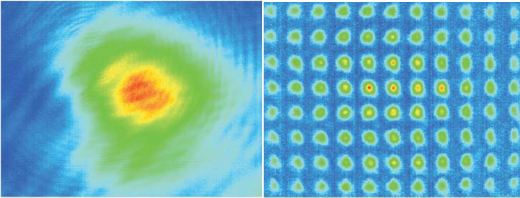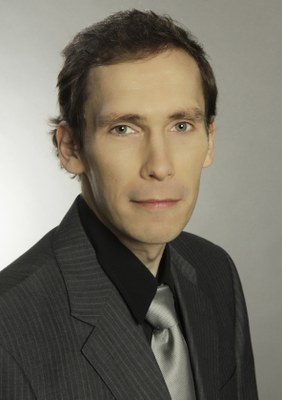Compressed Sensing for Terahertz Body Scanners
Priority Programme 1798 - Compressed Sensing in Information Processing (CoSIP) is one of the newly established 16 Priority Programmes by the German Research Foundation (DFG), in which researchers will investigate efficient ways to recover the entire information inherent in a specific signal be it e.g. a radar surveillance signal, a visual or audio signal, etc. using Compressed Sensing methods.

In this, Compressed Sensing relies on two salient principles, sparsity and incoherence. Sparsity refers to the idea that the information rate of a signal is much smaller than expected from its bandwidth, so that the signal may be represented by a small number of elements in a proper basis or frame. Incoherence expresses the concept that signals with a sparse representation are spread out in the sampling domain.
In the new project “Compressed sensing for terahertz body scanners”, within the framework of SPP1798, the methods of Compressed Sensing are applied to the special field of terahertz body scanners, investigating its signals with respect to sparsity, bandwidth, dynamics, and statistical behaviour. The project team is jointly formed of researchers from Humboldt University Berlin and Technical University Munich. The group at HU Berlin is headed by Prof. Heinz-Wilhelm Hübers, contributing expertise about the Terahertz (THz) spectral region of the electromagnetic spectrum. The group at TU Munich is headed by Prof. Xiaoxiang Zhu. The Munich-group contributes its extensive experience in the domain of signal processing to the project.
The goal of the project is to apply Compressed Sensing sampling methods, and reconstruction approaches to the imaging sub-field of THz-security imaging. With the help of novel terahertz spatial light modulator designs (THz-beamer) the intended goal is to increase the spatial resolution in acquired THz-images and at the same time reduce the necessary acquisition time. Due to the combined expertise from HU Berlin and TU Munich it is intended to extend the existing CS theory for a robust reconstruction, i. e. contributing to a THz specific CS framework.

Figure 1: Compressed sensing for terahertz body scanners project Logo
In this, the field of terahertz security imaging is especially challenging. Over the last 20 years the THz region of the electromagnetic spectrum has developed from once being known as the THz gap into a very promising region for many applications. The most prominent one is security imaging, where THz body scanners are a vivid research field. For this application high quality, real-time or video-rate imaging capabilities are necessary. However, large-scale detector arrays are not readily available for THz radiation. This challenge is addressed by using a single or just a few very sensitive detectors in combination with mechanical scanning. Therefore, techniques which combine high sensitivity, single pixel detectors with fast, non-mechanical scanning are crucial not only for security imaging but for all THz imaging applications.
THz and CS
Since in many applications THz images are quite smooth it is likely that they are sparse in the Fourier and/or wavelet domain. In fact, first research results already demonstrate this sparsity. Under this premise, utilizing Compressed Sensing (CS) techniques can reduce the number of (necessary) measurement acquisitions in order to recover the entire information inherent in a THz scene and thus potentially decreasing the imaging time. Since, in a single pixel imaging setting only one detector is available; in such a setting the imaging time is directly proportional to the number of acquisitions. Therefore, CS is a very promising technique for improving THz imaging significantly. The peculiarities of the THz spectral region require tackling several challenges within the CS framework. These are, for example, multi-path propagation, diffraction problems, speckle and coherence effects of the radiation. Among all the issues to be addressed, the exact modeling of the aforementioned phenomena is extremely complex, and hence as a starting point simplified models need to be introduced for diverse aspects. This may result in severe modeling errors, i.e. errors in the sensing matrix. During the project we intend to solve these specific challenges using a compressive deconvolution approach. Furthermore, we want to develop a comprehensive model of the THz imaging process itself. The model will be verified by measuring the various accessible model components/parameters.
THz Beamer
THz Spatial Light Modulator designs are not readily available in the THz region but are, due to their tremendous potential benefits, a very vivid research sub-field within the THz domain. Especially challenging is the physical understanding of these SLMs for imaging applications, since in this context the SLMs use tenth of thousands of pixels and all pixels have to be addressable individually via a computer. Therefore, in the THz imaging context the term THz beamer is often used. The schematic composition of a THz beamer is shown in Fig. 2.

Figure 2: Schematic diagram of a THz beamer.
Our THz beamer prototype is working at 0.35 THz (0.85 mm) and uses a Digital Micromirror Device (DMD) as VIS SLM. With the help of the optical switch it is possible to translate structures from the VIS domain into the THz domain. This is made possible due to the fact that VIS radiation excites charge carriers (electrons in the conduction band as well as holes in the valence band) in the optical switch. The transmission/reflection of THz radiation incident on the optical switch is, therefore, spatially modulated since THz radiation is affected by the generated charge carriers in the optical switch.
|
|
|
Figure 3: Example of a measurement sequence with a THz beamer (left) and an example measurement result measured with a single detector in just a few seconds without mechanical movement (right).
During the project, the physical evaluation of the generated charge carriers in different illumination scenarios and the overall performance (modulation depth, pixel cross talk, switching properties, etc.) of the THz beamer are an important project part.
→ available: Bachelor project (Bachelorarbeit zu vergeben)
|
|
Contact: Sven Augustin Rutherfordstr. 2
Phone/E-Mail: |
References
S. Augustin, J. Hieronymus, P. Jung and H.-W. Hübers, Compressed Sensing in a Fully Non-Mechanical 350 GHz Imaging Setting, Journal of Infrared, Millimeter and Terahertz Waves, 36(5), 496–512 (2015). DOI: 10.1007/s10762-014-0141-5
G. Delgado, Optically controlled spatial modulation of (sub-)millimeter waves using nipi-doped semiconductors, Microwave and Guided Wave Letters 5(6), 198–200 (1995). DOI: 10.1109/75.386130
T. F. Gallacher, R. Søndenå, D. A. Robertson, Optical Modulation of Millimeter-Wave Beams using a Semiconductor Substrate, IEEE Transactions on Microwave Theory and Techniques, 60(7), 2301-2309 (2012). DOI: 10.1109/TMTT.2012.2193142
S. Augustin, Advancing THz-Security Imager by using Digital Image Processing-Methods at the Hardware Level, PHD Thesis, PREPRINT



